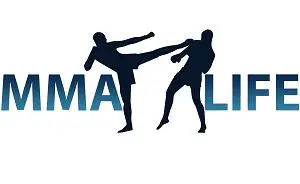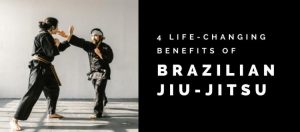Jiu Jitsu is a grappling style of martial arts that traditionally incorporates a training uniform (Gi) and a belt ranking system. This belt system consists of different colors and stripes that symbolizes the practitioner’s skills and experience.
Jiu Jitsu teachers are known to be more conservative than other traditional martial arts on the promotion of their students to a different belt color. Therefore, a black belt in Jiu Jitsu is notorious for being difficult to obtain. This article focuses on the white belt journey towards becoming a blue belt, the first belt beyond white.
Promotional Ranking System
In addition to the color ranking system adopted by many traditional martial arts, most Jiu Jitsu academies also use stripes as a sign of progress between belt colors. The belts worn by each Jiu Jitsu practitioner has a black tab at one end of their belt where the stripes, represented by white athletic tapes, wrap around. Traditionally, four stripes need to be earned before progressing to the next ranking. Of course, there are exceptions to this since a teacher could decide to promote any student to the next belt color without having all four stripes.
Adult Ranking System
In Jiu Jitsu, the adult and children ranking system uses different colors. The practitioner must be minimally 16 years old or older before they could receive the adult color ranking of blue and higher.
Jiu Jitsu adult ranking system from white to black belt:

White > Blue > Purple > Brown > Black
Factors in Length of Time it Takes to Get to Blue Belt
The average time it takes to obtain a blue belt is approximately 2-3 years depending on class attendance and sparring frequency. However, this length of time may vary based on the factors listed below.
- Instructors and academies – The promotional criteria between Jiu Jitsu academies differ from each other.
- Grappling experience – Most practitioners with prior grappling experience, like wrestling, judo, or sambo, will naturally progress faster and get promoted sooner.
- Frequency of training – If you view Jiu Jitsu as a hobby and show up to class less than 3 times a week, then do not be surprised when the more active teammates get promoted earlier than you.
- Competition oriented – Your decision to compete in Jiu Jitsu tournaments will normally influence how fast your instructor promotes you. However, being competition oriented does not guarantee a faster promotion. This is especially true if you do not win when you compete; your instructor may actually hold you back if they believe you are not up to par with the competition in your division.
Belt Exam
The formality of belt promotions ranges between schools. Particular academies will want you to attend a minimal number of classes or follow their curriculum requirements before even considering your belt promotion. Additionally, some instructors will informally promote their students at the end of a class, while others will only offer promotions upon the successful completion of a belt exam. The list below are an example of a belt exam.
-
Technical knowledge – You are required to memorize a particular set of techniques and be able to perform them with a training partner. These moves consist of ground and takedown techniques designed by the teacher. Each technique demonstrated will be evaluated for completion and correctness.
-
Sparring evaluation – The teacher may also assess how well you grapple versus teammates of varying experiences.
Promotional Criteria
The following are examples of how a teacher may evaluate a student to determine if they are ready to be promoted or not. These are everyday observations and not specific to an exam, as previously mentioned.
-
Technique – Are you able to learn and retain the knowledge required to perform techniques shown in class? Additionally, are you able to demonstrate these techniques with fluidity in your movements?
-
Sparring observation – How well do you fare versus teammates with similar ranking or experience? Are you able to successfully transfer techniques taught in class to the sparring sessions?
-
Competition performance – If you participate in Jiu Jitsu tournaments, then some instructors will put a heavy emphasis on your performance as a deciding factor. Bringing home medals will definitely not hurt your case!
How to Get Your Blue Belt
Want to get your blue belt? Here are some suggestions.
Technique
As a white belt, you will spend most of your time being exposed to basic and fundamental Jiu Jitsu techniques. Some academies have classes solely dedicated to beginners and white belts. The list below consists of technique-related suggestions that white belts should be equipped with before becoming a blue belt.
- Positional escape – Have at least one go to move for escaping each position, such as side control, back control, etc.
- Submissions – Start learning to chain together submissions.
- Sweeps and guard passes – Have reliable sweeps and guard passes that consistently work on other white belts.
- Submission escape – You should know escapes for highly used submissions like triangles, armbars, etc.
Sparring
Sparring is a must in Jiu Jitsu, at least in most places, which separates them from other traditional martial arts. Unless you have prior experience in grappling, such as wrestling, the sparring sessions could be an intimidating process.
- Survival and positional escapes are key when you grapple against higher ranked teammates.
- As you start having more training experience, you should eventually be able to get into dominant positions and work on your submissions against the same or less experienced teammates.
General BJJ Tips for White Belts/Beginners
- During sparring sessions, learn to be relax in bad and uncomfortable positions. This is one of the key to survival. However, staying relax will not be easy, especially when you are dealing with a bigger and/or more experienced teammate.
- Reduce the spazziness. Accidental elbows and knees could be prevented!
- As you become exposed to different techniques and strategies, experiment with them during sparring sessions and see what suits you best.
- Develop the ability to flow as you grapple instead of being stagnant or spassy. Flow rolls are just as important as hard rolls in your progression as a grappler. During flow rolls, you will be able to try out new things and refine your movement.
- Learning to not be stubborn and tapping to submissions are highly important to your health and future of coming back to the next class. It’s hard to progress when you are always injured.
- While it is important to roll with people better than you or at your skill level, it is just as important to roll with people who are less skilled than you. Rolling with those less skilled than you will give you opportunities to refine your offensive techniques, work from a dominant position, try new things, and work on your submissions. These things are very hard to do when you are rolling against people better than you, or even people on par with you.
Conclusion
The journey to become a black belt is a long and arduous one. While some phenoms like BJ Penn get their black belts in record time, most of us will have to put in at least a decade. Mike Bidwell of BJJ After 40 was a brown belt for 13 years! Before you even think about reaching this status, you should focus on learning as much as you can and have fun doing it. Blood, sweat and maybe even some tears will be shed on this journey. Hopefully, this article will help ease your path to becoming a blue belt.
Recommended Tools for White Belts
If you are a white belt and want to drill your positions, submissions, and takedowns at home, then I suggest taking a look at our review of grappling dummies.
Recommended Reading Next: How Long Does a BJJ Purple Belt Take?




